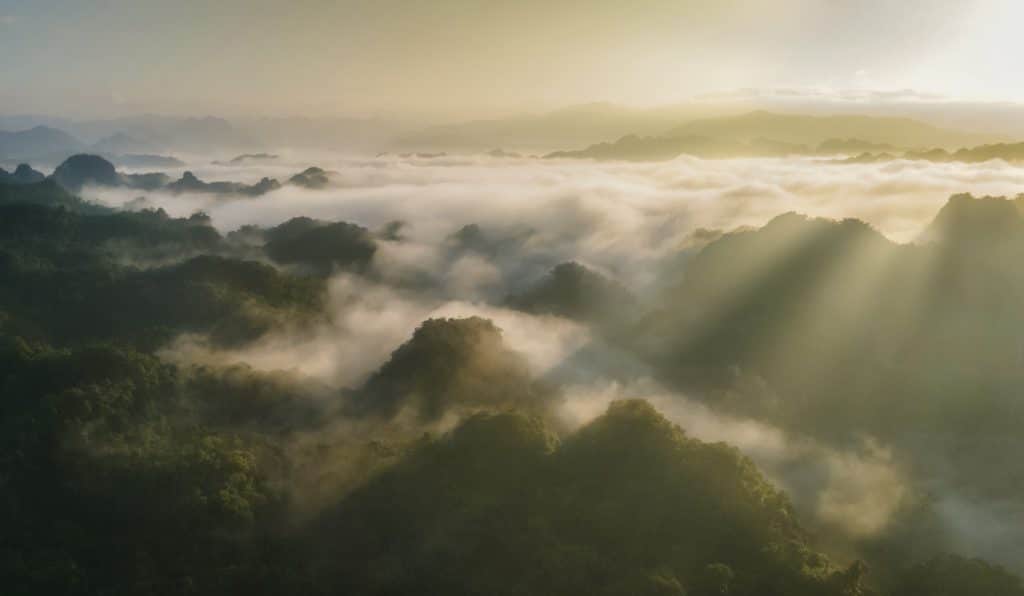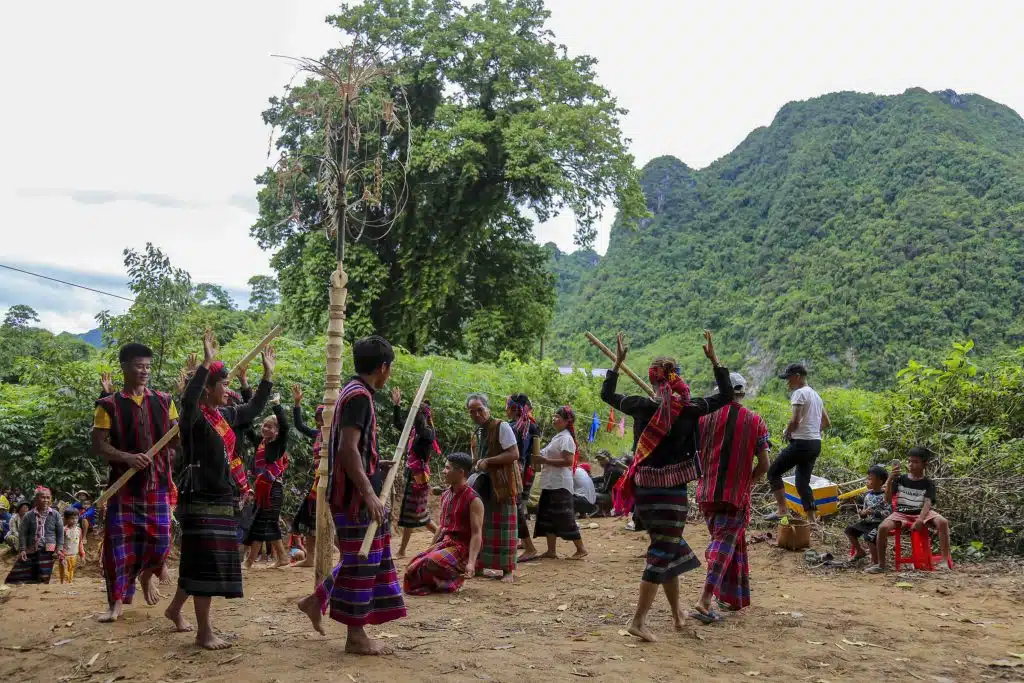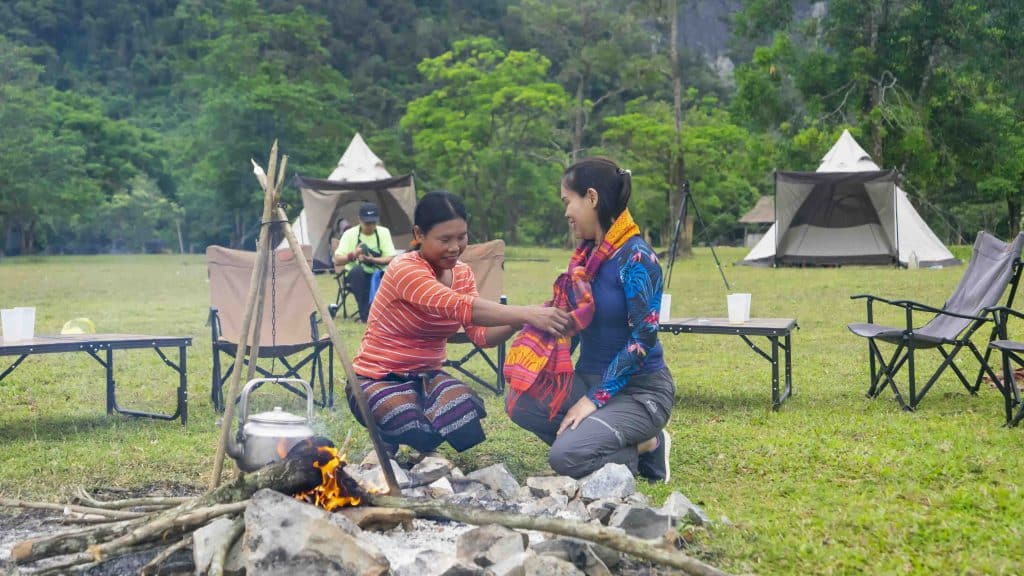Nguyên Sa
Beneath the endless cover of green forests, wreathed in year-round clouds and mist, the magnificent Truong Son Mountains pass through the provinces of Quang Binh, Quang Tri, and Thua Thien – Hue. The mountains are home to many groups of Bru-Van Kieu people, including the Bru, Van Kieu, Ma Coong, Tri, and Khua. They live close to nature and preserve many unique traditions and religious beliefs.

They live in small, three- to four-room stilt houses that form vil (villages) near forests, rivers, and streams. Activities are organized by the xuat vil (village head or elder), who is the village’s highest authority for connecting with the ancestors and deities through traditional rituals at important festivals and other events.
Their native languages are among the Bru dialect continuum, a Katuic language of the Mon-Khmer family. They have also adopted the language of Vietnam’s ethnic majority, the Kinh people. Men traditionally wear loincloths and turbans, while women wear wrap skirts and sleeveless blouses with square or round collars. These outfits are relatively simple, but their hairstyles add a unique touch. Bru men and women both used to wear their long hair styled in buns. Girls wear buns to the left, whereas married women pile their hair atop their heads.

Music plays an important part in the lives of the Bru people, as evidenced by their many traditional instruments. These include the flute, the ta-lu mandolin, the amam pan-flute, the khene (a bamboo mouth-organ), and gongs made of wood, bamboo, and alloys. These instruments are used to play melodies such as Ta Oai (call-and-response) or Ta Tia (a lullaby).
The Bru people have rich spiritual lives, as demonstrated by their animist worship of deities who govern the land, mountains, rivers, hearth, and fire. Worship of the living spirit is by far the most unique spiritual activity. This unusual custom originates from wishes for a prosperous and healthy life. The Bru believe that everyone’s spirit has a guardian deity and that both the spirit and the guardian must be worshipped. The sacred spirit will watch over and bless the living body on Earth. Bru people worship their own spirit as a form of self-respect and as a reminder to remain true to themselves, and be a good person in their village and society.

It would be remiss to talk about the culture and customs of the Bru subgroups without mentioning their unique festivals. The Ma Coong of Ca Roong Village (Thuong Trach Commune, Bo Trach District, Quang Binh Province) are famous for their drum festival on the 16th day of the first lunar month. The sky god Giang instructed the villagers to build a massive, resonant drum and strike it on the full moon to scare away monstrous monkeys, thereby ensuring peace in the village for the rest of the year. At the end of the harvest season, the Pakoh people of A Luoi District (Thua Thien – Hue Province) celebrate the Ada Koonh Festival. Pakoh communities in Huong Hoa and Dakrong Districts (Quang Tri Province) celebrate Arieu Ping, their most important festival, to pray for a good harvest and fair weather. They typically choose locations near the village’s entrance, where ancient trees stand and streams flow, to perform rituals for the deities and communal activities to tighten bonds of friendship.
In 2018, the Vietnamese government implemented a forest closure policy. Ethnic people are no longer entirely dependent on the mountains and forests. They now play a larger role in economic growth, particularly in the tourism industry, which offers tours with the theme: “Discover nature and the culture of the Bru-Van Kieu”. Travelers can reach remote villages in Quang Binh, Quang Tri, and Thua Thien Hue Provinces on the eastern and western branches of the Ho Chi Minh Trail. Here, visitors can experience village life and enjoy rustic, one-of-a-kind dishes and drinks made from fresh and natural ingredients, in addition to marveling at the region’s primeval, awe-inspiring nature.










